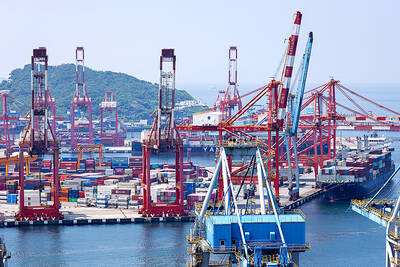A top World Trade Organization (WTO) official warned on Friday that a growing web of regional trading agreements threatens to wreck global trade negotiations.
"There are more voices saying we are not interested in multilateral arrangements and this can be extremely unhealthy and it is time we did something on this," said Stuart Harbinson, director in the office of WTO chief Supachai Panitchpakdi.
There are now 150 regional trading agreements in force, he told business leaders at a conference being held parallel to a weekend Asia-Pacific political summit in the Chilean capital Santiago.
Another 70 were in the works and by the end of 2007, the total could snowball to 300, he said.
The spread of such deals would distract attention from and dampen the force behind the main WTO trade talks, launched in Doha, Qatar in 2001, to open up farm, industrial and services sectors, Harbinson said.
"This expanding web of RTAs (regional trading arrangements) raises the question of the workability of parallel multilateral approaches," Harbinson said.
Unlike WTO trade rules, which are standard across the world, bilateral and other regional free trade agreements vary widely and are largely discriminatory against other partners. They also tended to jack up production costs because businesses have to comply with a variety of trading rules.
Prominent US economist Fred Bergsten warned that regional trading arrangements threatened to produce trading blocs centering around Europe, the Americas and Asia and eventually create a "dangerous" tripolar trading system and trade wars.
The US, for example, stands to lose exports totalling some US$25 billion a year if an East Asian Free Trade plan becomes a reality, he warned at the conference Friday.
Nevertheless, free trade agreements were a key insurance against any failure of of current multilateral trade talks, said Bergsten, director of the Washington-based Institute for International Economics.
"The prospects for the Doha round are uncertain," he said.
The round is aimed at a binding international treaty among 148 WTO nations, but disagreements over how to proceed in key areas such as agriculture have bogged down negotiations.
Leaders of the APEC forum who meet in Santiago at the weekend are expected to discuss a business leaders' proposal for the creation of a Free Trade Area of the Asia-Pacific embracing the giant trading groups of the Americas and East Asia.

Nvidia Corp chief executive officer Jensen Huang (黃仁勳) on Monday introduced the company’s latest supercomputer platform, featuring six new chips made by Taiwan Semiconductor Manufacturing Co (TSMC, 台積電), saying that it is now “in full production.” “If Vera Rubin is going to be in time for this year, it must be in production by now, and so, today I can tell you that Vera Rubin is in full production,” Huang said during his keynote speech at CES in Las Vegas. The rollout of six concurrent chips for Vera Rubin — the company’s next-generation artificial intelligence (AI) computing platform — marks a strategic

REVENUE PERFORMANCE: Cloud and network products, and electronic components saw strong increases, while smart consumer electronics and computing products fell Hon Hai Precision Industry Co (鴻海精密) yesterday posted 26.51 percent quarterly growth in revenue for last quarter to NT$2.6 trillion (US$82.44 billion), the strongest on record for the period and above expectations, but the company forecast a slight revenue dip this quarter due to seasonal factors. On an annual basis, revenue last quarter grew 22.07 percent, the company said. Analysts on average estimated about NT$2.4 trillion increase. Hon Hai, which assembles servers for Nvidia Corp and iPhones for Apple Inc, is expanding its capacity in the US, adding artificial intelligence (AI) server production in Wisconsin and Texas, where it operates established campuses. This

Garment maker Makalot Industrial Co (聚陽) yesterday reported lower-than-expected fourth-quarter revenue of NT$7.93 billion (US$251.44 million), down 9.48 percent from NT$8.76 billion a year earlier. On a quarterly basis, revenue fell 10.83 percent from NT$8.89 billion, company data showed. The figure was also lower than market expectations of NT$8.05 billion, according to data compiled by Yuanta Securities Investment and Consulting Co (元大投顧), which had projected NT$8.22 billion. Makalot’s revenue this quarter would likely increase by a mid-teens percentage as the industry is entering its high season, Yuanta said. Overall, Makalot’s revenue last year totaled NT$34.43 billion, down 3.08 percent from its record NT$35.52

PRECEDENTED TIMES: In news that surely does not shock, AI and tech exports drove a banner for exports last year as Taiwan’s economic growth experienced a flood tide Taiwan’s exports delivered a blockbuster finish to last year with last month’s shipments rising at the second-highest pace on record as demand for artificial intelligence (AI) hardware and advanced computing remained strong, the Ministry of Finance said yesterday. Exports surged 43.4 percent from a year earlier to US$62.48 billion last month, extending growth to 26 consecutive months. Imports climbed 14.9 percent to US$43.04 billion, the second-highest monthly level historically, resulting in a trade surplus of US$19.43 billion — more than double that of the year before. Department of Statistics Director-General Beatrice Tsai (蔡美娜) described the performance as “surprisingly outstanding,” forecasting export growth